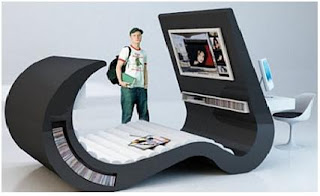1. Apples, not caffeine, are more efficient at waking you up in the morning.
2. Alfred Hitchcock didn't have a belly button.
3. 40,000 Americans are injured by toilets each year.
4. People do not get sick from cold weather; it's from being indoors a lot more.
6. Only 7 per cent of the population are lefties.
7. Forty people are sent to the hospital for dog bites every minute.
8. Babies are born without kneecaps. They don't appear until they are 2-6 years old.
9.
Diana. They were 7th cousins
10. The toothbrush was invented in 1498.
11. The average housefly lives for one month.
12. A pack-a-day smoker will lose approximately 2 teeth every 10 years.
13. A coat hanger is 44 inches long when straightened.
14. The average computer user blinks 7 times a minute.
15. Your feet are bigger in the afternoon than any other time of day.
16. Most of us have eaten a spider in our sleep.
17. The REAL reason ostriches stick their head in the sand is to search for water.
18. The only two animals that can see behind themselves without turning their heads are the rabbit and the
parrot.
20. Michael Jackson owns the rights to the South Carolina State anthem.
21. In most television commercials advertising milk, a mixture of white paint and a little thinner is used in
place of the milk.
22. Prince Charles and Prince William NEVER travel on the same Airplane, just in case there is a crash.
23.
24. Most hospitals make money by selling the umbilical cords cut from women who give birth. They are used in vein transplant surgery.
25. .
















.jpg)




